Pair Front For Lexus GS350 IS250 2007 2008 2009 2010 2011 AWD CV Axle Shaft
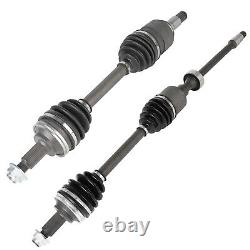
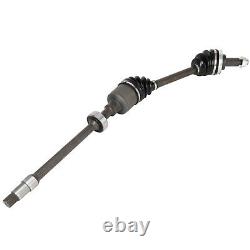
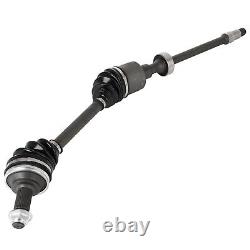
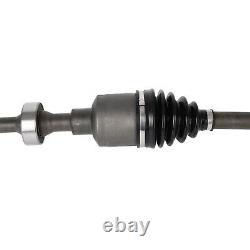
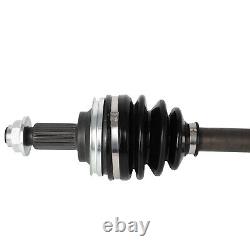

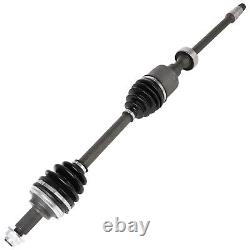
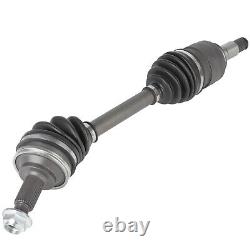
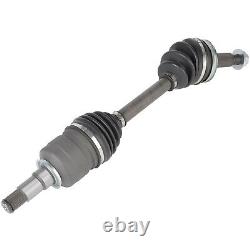
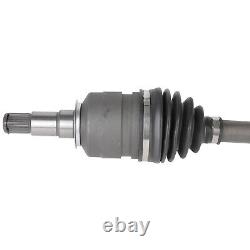
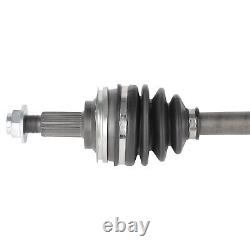



What Is A CV Axle? The function of an axle is to connect the transmission gears to the wheels and transfer power from the engine to the wheels of your vehicle. CV stands for Constant Velocity, which is a mechanical joint responsible for transferring the torque from the transmission to the drive wheels at a constant speed/velocity while accommodating the up-and-down motion of the suspension. CV axles are common in front-wheel-drive vehicles, all-wheel-drive vehicles, and some rear-wheel-drive vehicles that use independent suspensions. What Are The Symptoms Of A Bad CV Axle?
Pair Front For Lexus GS350 IS250 2007 2008 2009 2010 2011 AWD CV Axle Shaft. The most common symptom of a bad CV joint is knocking and screeching noise while turning.This usually happens due to the lack of lubrication inside the CV joint or when the joint is on the verge of failure. The louder the noise, the more is the risk of total breakage. However, such a sound also arises due to the bad ball joint and worn-out tie rods. If your ball joints are falling, get them checked and replaced. If you notice grease under your car or on your tires, it could be because of a bad CV joint.
Damaged CV joint boots lead to grease leakage and allow the CV joints to sustain further damage. Get your CV joints checked for damage. It the boot has been damaged for a long time, your CV joints might be faulty and need to be checked. A worn or damaged CV joint will vibrate while you're driving. CV joints in this condition will not be able to balance properly during rotation. The more you speed up, the more intense the vibrations will become. This is a sign of a bad CV axle, which can lead to excessive vibrations, making it difficult to control the vehicle. In worse cases, the vehicle starts to bounce, and in such a condition; it is advised not to drive your vehicle. Another sign of a bad or failing CV joint is a wobbly wheel, especially when you press the gas pedal. If you suspect your axle shaft is the culprit, go under the vehicle and try to push the axle up and down and side to side. Any slack or movement in the axle confirms that the CV shaft is damaged. Make sure the vehicle is in Park or that it is in gear with the parking brake set. Jack up the car and remove the wheel on the side where you will be working. It will be in the direct center of the hub or wheel assembly where you removed the wheel. Some vehicles have a cotter pin to secure the axle nut. You'll need to remove it using pliers to straighten the pin so it can be pulled out. You can spray it with lubricant if it's rusted or stuck. Now it's time to remove the axle nut. In some cases, this step may require quite a bit of effort. If this is the case, your safety bet is to do this step before jacking the car up. This is where the optional impact wrench will come in handy. The wrench will help you safely remove the axle nut without having to use a pry bar. Carefully remove the bolts holding the brake caliper brackets in place and remove the calipers. Instead of dropping the caliper to dangle on the brake line, use a carabiner or other small hook to support the caliper and keep pressure off the brake line. Loosed the bolts holding the outer tie rod to the steering knuckle. If there's another pin here, you'll again need to use pliers to straighten it out. In some cases, the steering knuckle and tie rod will not want to be separated.This will require a few light taps with a hammer or mallet. Remove the bolts holding the hub to the strut tower. You'll need to keep the nut from turning while unbolting the hub. Look further down the axle to see where it meets the transmission. Use your pry bar to pry the axle from the CV joint.
You should be able to remove the axle at this point. You might see transmission fluid or have some leak while prying the axle.This is completely fine, but you may want to set up a pan or tray to catch the fluid. Insert the new axle into the transmission where the old one was removed. You can use your mallet or a hammer wrapped in a towel to carefully coax the axle into position. Attach the new axle to the hub and begin replacing the bolts you removed earlier in the process. Here, as before, use an impact wrench if you have one to safely tighten the nut.
If you don't have one, get the nut as tight as you can without yanking on it while it's up on stands. Replace the wheel and lower the vehicle.If you need to tighten the axle nut further, it's best to do it with the vehicle on the ground, so that you can really push on a wrench or bar to tighten without worrying about the vehicle falling. Q: Can You Drive With a Bad CV Axle? Do not ignore a bad CV axle. The vibrations you're feeling and noise you're hearing are a warning that it's time for maintenance.
If your axle fails while you're driving, you could lose control of your car. Q: How Long Should a CV Axle Last?
Driving over rough terrain where there are rocks and debris can shorten the life of a CV axle, because there are more opportunities to damage the rubber boot that protects the moving parts. The same goes for driving in snowy or icy conditions, where salt and sand can also damage the rubber. In some cases, the rubber just dries out and cracks, which has the same effect. Q: What Does a Bad Axle Sound Like? A: If you hear a clicking or grinding sound while turning, there's a good chance your CV axle is starting to go.The noise may also be present while accelerating, but it's most noticeable when turning the steering wheel. Q: Can The CV Axle Damage My Transmission? A: Yes, since it's connected directly to the transmission, a failing CV axle can cause damage. Excessive movement from a damaged axle can wear components inside the transmission more quickly than they would normally.
Left:23.2;Right:38.2. OR, you may choose to have a replacement. FEEDBACK IS VERY IMPORTANT TO US.
The note there will NOT be read. 1, We stand behind every product we sell. 3, We define the item as defective only if it doesn't function as described. Mirror Glasses & Other Parts. 4 pcs wheel hub bearing. Brake Pads & Brake Shoes. Struts & Suspension Kit & Hubs. Protection Shield & Lift Kit. (4) 2 Hubcentric Wheel Spacers 6x5.5 Fits Chevy Silverado Tahoe GMC Sierra 1500. (4) 1.5 Hubcentric 6x5.5 Wheel Spacers Fits Toyota Tacoma 4Runner Tundra Lexus.(4) 2 Hubcentric 6x5.5 Wheel Spacers Fits Toyota 4Runner Tacoma Tundra Sequoia. (4) 1 Hubcentric 5x4.5 5x114.3 Wheel Spacers Fits Honda Accord Civic Acura RDX. (4) 2 Hubcentric Wheel Spacers 5x5 Fits Jeep JK JKU Wrangler Grand Cherokee WK.
Fits Nissan Frontier 2.5L 2005-19 Suzuki Equator 2.5L 2009-12 Ignition Coil.

